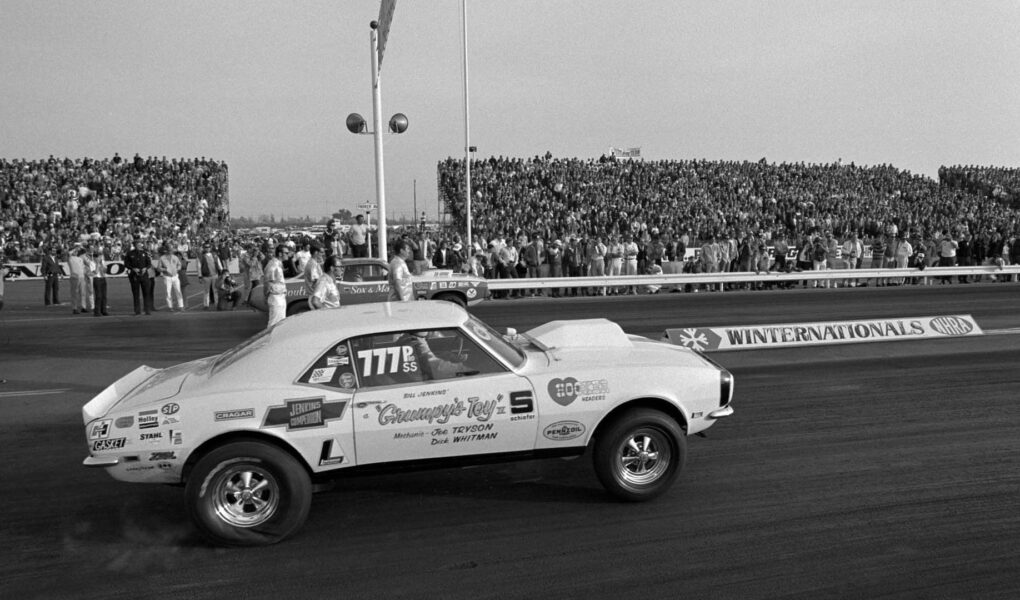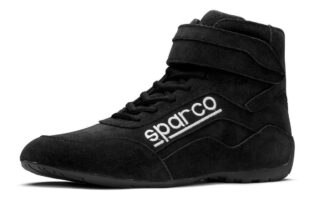Introduction:
Nestled within the thunderous roar of high-octane engines and the shimmering heat of asphalt, pro stock drag racing stands as a testament to human ingenuity and mechanical prowess. It is a world where precision engineering meets raw power, and where the relentless pursuit of speed transforms mere vehicles into finely-tuned machines capable of defying the laws of physics. With its roots deeply embedded in American motorsports culture, pro stock racing captivates both seasoned enthusiasts and curious newcomers alike. This article invites you to delve into the fascinating realm of pro stock drag racing, exploring its origins, the intricacies of vehicle design, the fierce competition that defines the sport, and the passionate community that rallies behind it. Join us as we accelerate into the heart of this electrifying pursuit, where every second counts and every race could carve legends into the annals of automotive history.
Table of Contents
- The Evolution of Pro Stock Drag Racing Technology
- Understanding the Mechanics Behind High-Performance Engines
- Strategies for Success: How to Optimize Your Drag Racing Team
- Safety Innovations in Pro Stock Racing: Ensuring Driver Protection
- Q&A
- In Retrospect
The Evolution of Pro Stock Drag Racing Technology
The landscape of Pro Stock drag racing has undergone a remarkable transformation since its inception. Early competitors relied heavily on mechanical innovations, focusing on maximizing the performance of naturally aspirated engines. Over the decades, advancements in materials science and engineering have redefined the game, leading teams to adopt lightweight composites and high-strength alloys to push the limits of speed and efficiency. The introduction of sophisticated data acquisition systems allows for real-time monitoring and adjustments, turning each run into a scientific exploration of the fine line between speed and reliability.
As the sport continues to evolve, the integration of electronics has become increasingly prevalent. The use of fuel-injection systems, coupled with advanced tuning software, enables teams to extract maximum horsepower while maintaining compliance with stringent regulations. In addition to engine technology, aerodynamics has taken center stage, with teams employing extensive wind tunnel testing to refine the shape of their vehicles for optimal drag reduction. The following table highlights some of the key technological advancements that have influenced Pro Stock drag racing:
| Technology | Description | Impact on Performance |
|---|---|---|
| Carbon Fiber Components | Lightweight materials used in bodywork and chassis. | Enhanced speed and maneuverability. |
| Data Analytics | Real-time performance monitoring systems. | Improved tuning and predictive analytics. |
| Aerodynamic Optimization | Refined vehicle shapes tested in wind tunnels. | Reduced drag, leading to increased acceleration. |
| Electronic Fuel Injection | Advanced fuel delivery systems. | More efficient power output and enhanced throttle response. |
Understanding the Mechanics Behind High-Performance Engines
High-performance engines are marvels of engineering, designed to extract maximum power and efficiency from every drop of fuel. In the world of pro stock drag racing, this means pushing the boundaries of combustion technology while maintaining strict adherence to regulations. Key components that contribute to the performance of these engines include:
- High-Compression Pistons: Allow for greater power output by compressing the air-fuel mixture more efficiently.
- Cylinder Head Designs: Optimized for airflow, enhancing the flow dynamics of incoming air and exhaust gases.
- Advanced Fuel Injection Systems: Deliver precise amounts of fuel to each cylinder, maximizing burn efficiency.
- Performance Camshafts: Designed to maximize timing and lift, increasing valve performance and enhancing power delivery.
The balance of these elements is crucial for achieving the desired horsepower and torque necessary for competitive drag racing. Additionally, understanding the intricate relationships between components can lead to tailored tuning strategies that improve performance. A comparative analysis can illustrate the potency of different configurations. The table below summarizes key engine specifications for various setups:
| Engine Type | Horsepower | Torque (lb-ft) | Weight (lbs) |
|---|---|---|---|
| Small Block V8 | 1,200 | 900 | 300 |
| Big Block V8 | 1,500 | 1,100 | 400 |
| Turbocharged V6 | 1,000 | 800 | 280 |
Strategies for Success: How to Optimize Your Drag Racing Team
In pro stock drag racing, team dynamics play a crucial role in achieving peak performance on the track. To maximize your team’s potential, focus on fostering clear communication among members, ensuring that everyone is aligned with the team’s goals and objectives. This can be reinforced through regular meetings, where each member shares updates on their responsibilities, and constructive feedback is encouraged. Additionally, establish a culture of inclusivity where every team member, from the driver to the pit crew, feels valued and empowered to contribute ideas for improvements.
Equally important is the data-driven approach to performance optimization. Utilize advanced telemetry systems to collect and analyze data from each run, allowing for informed decisions on tuning and strategy. Create an organized system to track key metrics such as reaction times, engine performance, and track conditions. Implementing a real-time feedback loop can help in making immediate adjustments during race day, maximizing your chances of success. Below is a simple overview of essential metrics to monitor:
| Metric | Description |
|---|---|
| Reaction Time | Time taken from green light to launch. |
| 60ft Time | Time for the car to cover the first 60 feet. |
| 1/8 Mile Time | Time taken to reach the 1/8 mile mark. |
| Top Speed | Maximum speed achieved during the run. |
Safety Innovations in Pro Stock Racing: Ensuring Driver Protection
Pro Stock drag racing has always been a thrilling spectacle, but ensuring the safety of drivers is paramount. Innovations in safety technology have evolved with the sport, significantly enhancing driver protection during high-speed races. Some of the key advancements include:
- Improved Roll Cages: Reinforced designs that withstand high-impact forces, offering better protection in case of rollovers.
- Advanced Restraint Systems: Multi-point harness designs that secure drivers effectively, minimizing movement during sudden decelerations.
- Fire-Resistant Fabrics: Suits and gear made from materials that withstand intense heat and flames, safeguarding drivers in the event of a fire.
- Helmet Technology: Enhanced helmet designs that incorporate advanced materials and cushioning to absorb impacts more efficiently.
- Data Monitoring Systems: Real-time telemetry to monitor driver vitals, alerting teams to any unusual changes that may indicate distress.
Moreover, the utilization of crash test dummies in rigorous simulation environments has helped refine safety measures by providing valuable insights into the dynamics of collisions. In addition to equipment advancements, regulatory bodies have tightened safety protocols, mandating rigorous inspections and compliance with state-of-the-art standards. The table below highlights some of the critical components of safety regulations in Pro Stock racing:
| Safety Component | Regulation Standard |
|---|---|
| Roll Cage Design | NHRA Spec Compliant |
| Personal Safety Gear | SFI Certification Level 3 or higher |
| Driver Restraints | SFI 16.1 or better |
| Fuel Cell | Meets SFI 28.1 standards |
Q&A
Q&A: Understanding Pro Stock Drag Racing
Q1: What is Pro Stock drag racing?
A: Pro Stock is a highly specialized class of drag racing that features cars equipped with powerful, naturally aspirated engines, which means they don’t use any form of forced induction, like turbochargers or superchargers. These cars must closely resemble production vehicles but are stripped down and modified for maximum performance. Think of it as a high-octane ballet of engineering prowess and driver skill, where machines reach remarkable speeds and achieve incredible quarter-mile times.
Q2: What are the key features of Pro Stock vehicles?
A: Pro Stock cars are designed for both power and aerodynamics. They typically have a 500-cubic-inch V8 engine and use a powertrain built from lightweight materials to enhance performance. A notable feature is the use of a four-speed transmission that helps drivers navigate through the gears with precision. The chassis are based on factory models, but everything from the body to the suspension is custom-tuned for optimum racing conditions.
Q3: How does Pro Stock differ from other drag racing classes?
A: Pro Stock is distinct due to its emphasis on naturally aspirated engines and its stringent rules regarding vehicle construction. Unlike classes such as Top Fuel or Funny Car, which utilize supercharged engines and can run much faster, Pro Stock maintains a unique blend of raw horsepower and driver expertise. It finds a balance between performance and maintaining a connection to the production car lineage, making it a fascinating aspect of drag racing.
Q4: What role does the driver play in Pro Stock racing?
A: In Pro Stock racing, the driver is as crucial as the car itself. Precision is key; drivers must not only react quickly to the starting light but also manage everything from shifting gears at the perfect moment to maintaining control of the vehicle under immense acceleration. Pro Stock races are often won or lost by fractions of a second, making the driver’s skill a critical factor in the competition.
Q5: Can anyone participate in Pro Stock racing?
A: While anyone can technically sign up for a Pro Stock event, the class is highly competitive and requires significant investment in both time and resources. Drivers typically need to possess a high level of experience and have access to a professionally built car that meets NHRA (National Hot Rod Association) specifications. Many successful drivers have transitioned from other racing classes or have backgrounds in motorsports.
Q6: What kind of community surrounds Pro Stock drag racing?
A: The Pro Stock drag racing community is a vibrant mix of enthusiasts, engineers, and competitive racers. Fans often gather at events to support their favorite drivers, while participants share tips and tricks and celebrate each other’s successes. This camaraderie is enhanced by various racing teams, sponsorships, and media coverage, creating a passionate environment where technology and high-speed competition meet.
Q7: How can newcomers get involved in Pro Stock drag racing?
A: Newcomers interested in Pro Stock drag racing can start by attending local events to soak in the atmosphere and learn about the mechanics of the sport. Joining a local drag racing club or community can provide networking opportunities and tools for aspiring drivers or crew members. For those who desire to drive, taking racing classes and gaining experience in less competitive classes can be a valuable stepping stone towards a future in Pro Stock racing.
Q8: What does the future hold for Pro Stock drag racing?
A: The future of Pro Stock drag racing looks bright, with ongoing innovations in vehicle technology and increasing fan engagement. As electric and hybrid vehicles gain traction in the automotive world, discussions are underway about how these advancements might integrate into the realm of drag racing. Pro Stock, with its rich history and tradition, is likely to evolve while maintaining its core spirit of competition and engineering excellence.
This Q&A provides a clear and engaging overview of Pro Stock drag racing, highlighting its essence while inviting readers to explore further into this electrifying motorsport.
In Retrospect
As the roar of engines fades and the smoke clears from the burnouts, the world of pro stock drag racing offers more than just a fleeting thrill—it embodies a unique blend of precision, engineering, and adrenaline-fueled competition. Each event captures the relentless pursuit of speed and innovation, as talented drivers and their dedicated teams push the limits of what’s possible on the asphalt.
Whether you’re a seasoned fan or a newcomer to this exhilarating sport, there’s no denying the allure of powerful machines racing towards the finish line in a matter of seconds. As we look toward the future, pro stock drag racing will continue to evolve, driven by a passion for technology and the pursuit of perfection.
So, whether you’re cheering from the stands or tinkering in the garage, the spirit of pro stock drag racing unites us all in our quest for speed and excitement. And as the lights flash green once more, the roar of competition will echo, beckoning us back to the starting line for another thrilling ride.



